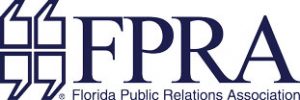Rachel Denton, Central West Coast Chapter
Meet Hardy Smith, our funny, quirky, passionate speaker on How to Use Self-Awareness as a Personal and Professional Asset.
During this lively and laugh-filled session, we learned how to use self-awareness to become a more effective public relations professional. There were two specific requirements from participants – interactive conversation and being a totally engaged group. Each one of us had to say “yes” to Hardy. Thus, the conversation began.
Action Item #1: Dealing with interpersonal relationships within your organization. Hardy asked us what our communication challenges are in regards to this? Here were audience responses:
- Dealing with people who are smarter than “anything.”
- Working with people who think their project is most important and don’t see the bigger picture.
- Pace and when you speak to someone specifically about something, all of a sudden it filters to everyone before you can even email the right message out to everyone.
- Flexibility and the exchange of ideas. A lack of listening.
- 75% of our employees are out in field; only 25% under our company’s roof.
- Sense of urgency.
- Age-old challenge of telling the value of public relations
- Unrealistic expectations
Now that we’ve talked about internal challenges, Hardy asked the audience about clients you are public relating to or for and where the challenges are there. Respondents quickly chimed in:
- Clients who don’t take your advice.
- Translating company’s technical jargon to verbiage that’s easily understandable by the public.
- Overcoming people’s misconceptions.
- Communications challenges – how to reach your audience
Hardy explained to us that your personality traits have everything to do with how you successfully interact with others and how others interact with you.
Do you know the real you? Who are you? To help us know ourselves better, Hardy had us take a very simple personality assessment called, “Core Snapshot.” The worksheet included four columns – A, B, C and D. The activity was to go across the page and down and pick words that most describe you in each row. We then totaled the columns at the bottom of the sheet. Hardy explained this was not a full-on personality assessment, but that these are the four different profiles we all have. We would be to identify our dominant trait through this learning exercise and the four categories: A, B, C and D. Hardy told to us to think of these as tools in the tool box. You’ll have your dominant trait, secondary and two others to use as needed.
Column A: A picture of a German shepherd appeared from Hardy’s PowerPoint. If you got the most check marks in Column A, you are in this category and very dominant and extremely difficult to communicate with.
Column B: A picture of a sheep herder appeared – these are the organizers. Everything has to be in order; they must have all information and can never get enough.
Column C: A picture of a Saint Bernard appeared– these are the people people. The caring, nurturing, always looking to help make sure everyone else is happy people. They are the peacekeepers.
Column D: A picture of an energetic Jack Russell appeared – these are the entertainers of the group. The party of the party, so to speak. They have fun all the time and must dial it down for the Column A people.
Hardy then told us to consider this when you connect with your colleagues:
Generation Age Ranges (2019):
Seniors: 73+
Boomers: 55-73
Gen X: 39-54
Gen Y: 23-38
Gen Z: 9-23
Your colleagues fall under one of these generation age ranges. It’s important to know their personality traits so you’ll understand how to effectively communicate with them. It’s about being aware. For instance, Seniors and Boomers have a common reaction when the Gen Y colleague asks, “Why can’t we do this new campaign?” Seniors and Boomers reply with, “Because that’s what I said, that’s the way it’s always been.” Thus, if you are trying to communicate up and share information with older generations, understand that they want compliance. That is what they know. If you want to be successful in selling, you’ve got to adapt to them.
So, what’s the benefit of recognizing personality characteristics? You can modify your behavior. It’s about you understanding you and you understanding others. Understanding others is what Hardy calls the “secret sauce.”
We review Action Item #1: Use personality awareness as an asset. Acton Item #2: Use self-awareness as an asset.
We want to strengthen internal relationships. Hardy explains that the key to successful, long term relationships is communication. Communicate effectively – in your proposals, emails, telephone calls, texts. Challenge yourself to understand you better in communications. Think about the communications preferences of those you communicate with at work, and about the audience groups, organizations or clients you communicate to. They may not understand your messaging.
Successful communication requires listening. Be an active listener. When you’re back at work and listening to people’s feedback, actually listen to them. Listen to the people you report to. Ask questions that will help you get good answers. Active listening is not a competition. How can you demonstrate that you’re being an active listener? Eye contact; ask for clarification; repeat what they said back to them; body language. Be sincere and don’t interrupt. Take notes.
Another prospective: look at your colleague – how do they dress? Do they wear colors? Then, they’re likely the entertainer of the group (D). Do they have pictures of their children in their offices? They’re likely the nurturer of the group (C).
You can even use this tool to communicate better at home by having your kids or husband take this “Core Snapshot.”
We then separated into groups of four and had a quick conversation about how we will use self-awareness to be a more effective public relations professional. Afterwards, we subdivided into pairs and exchanged business cards with that person, saying that we’re willing to adopt each other as an accountability partners and to email each other in a couple weeks about what we’ve done to take action.
In conclusion, we’ve learned to:
- #1: Recognize personality characteristics to create self-awareness.
- #2: Use self-awareness as an asset.
Play on your individual strengths that we’ve helped identify today. Recognize the personality characteristics of others and you will be able to use self-awareness to help you be a more effective public relations professional.
Thanks, Hardy!



